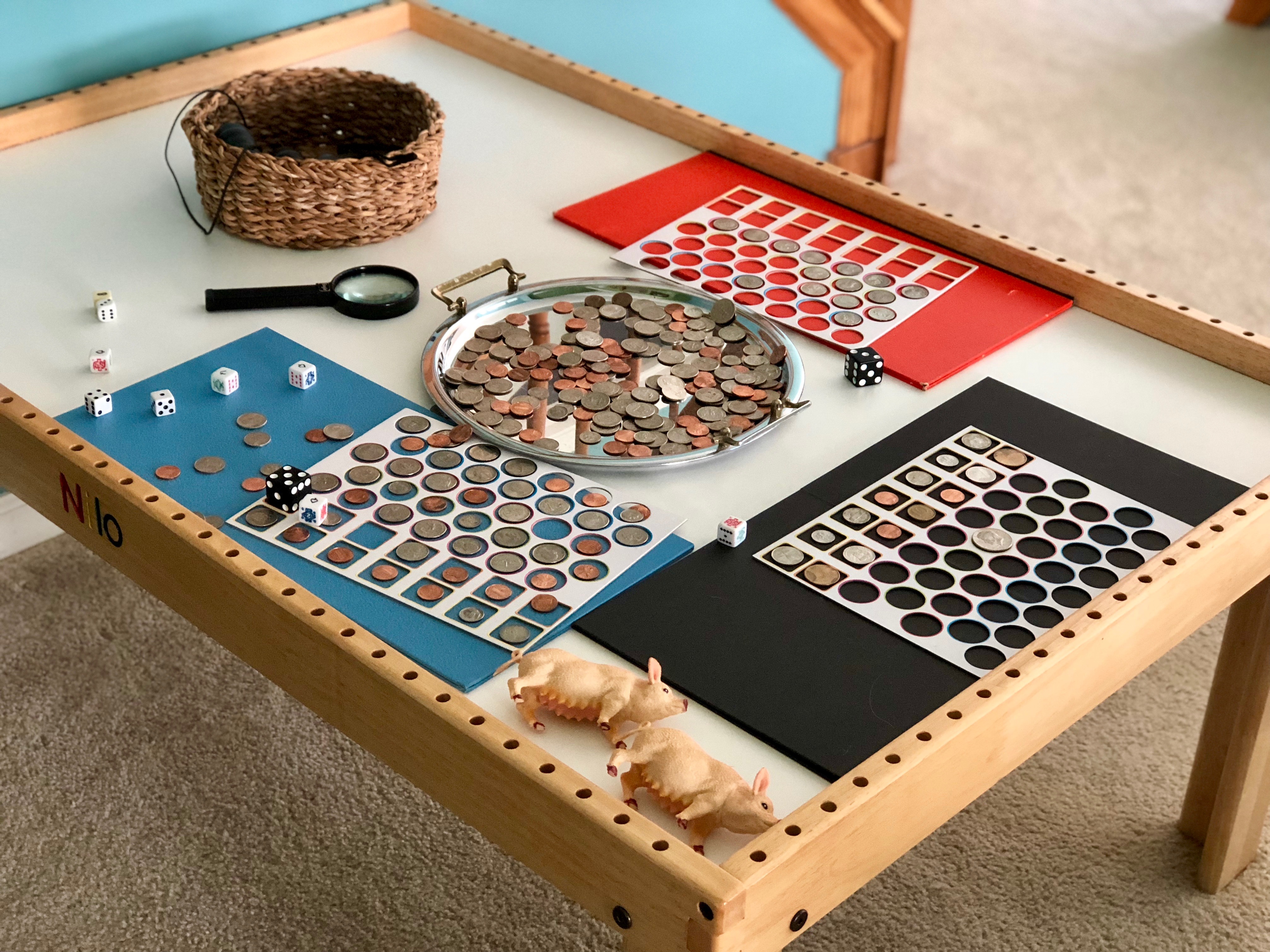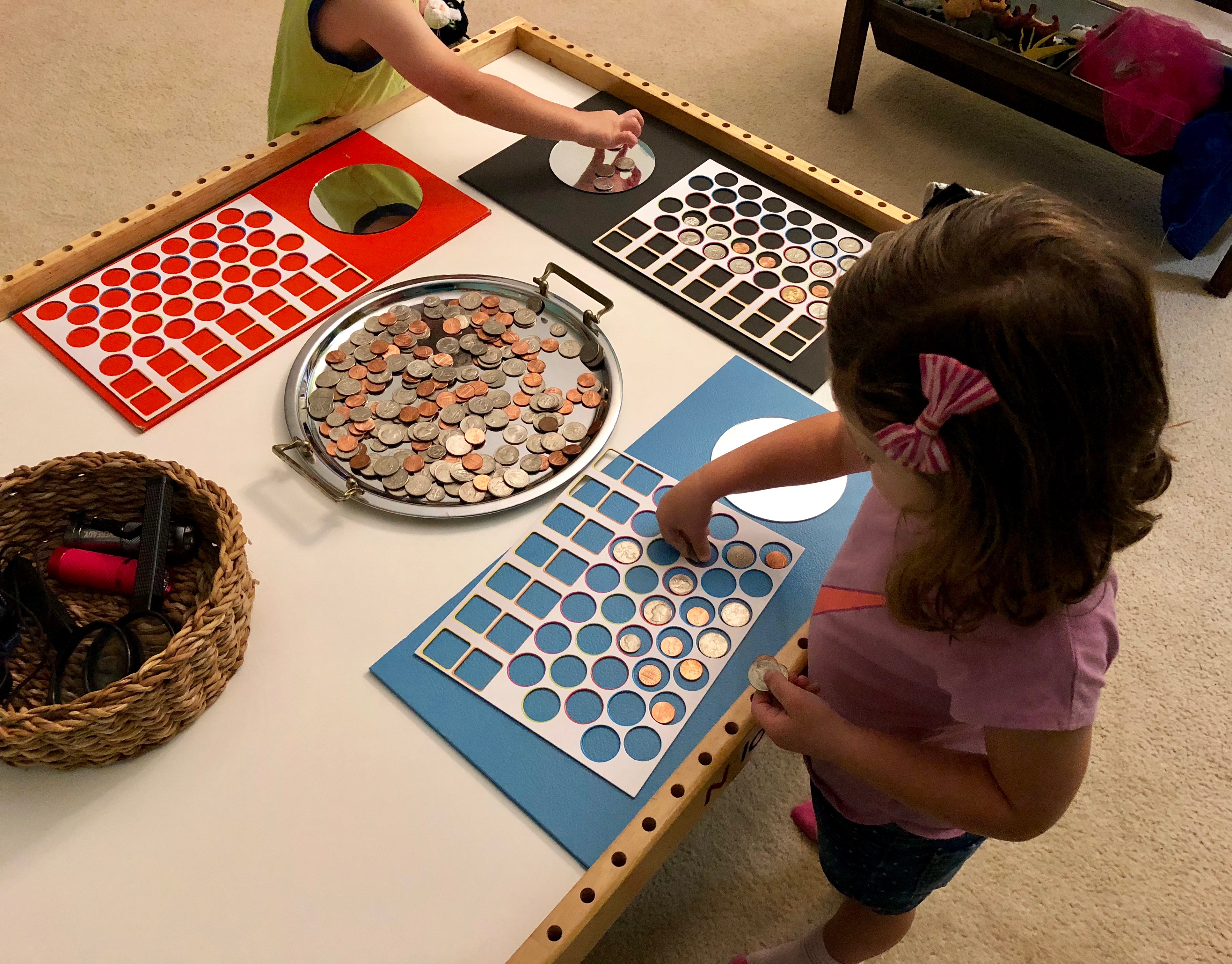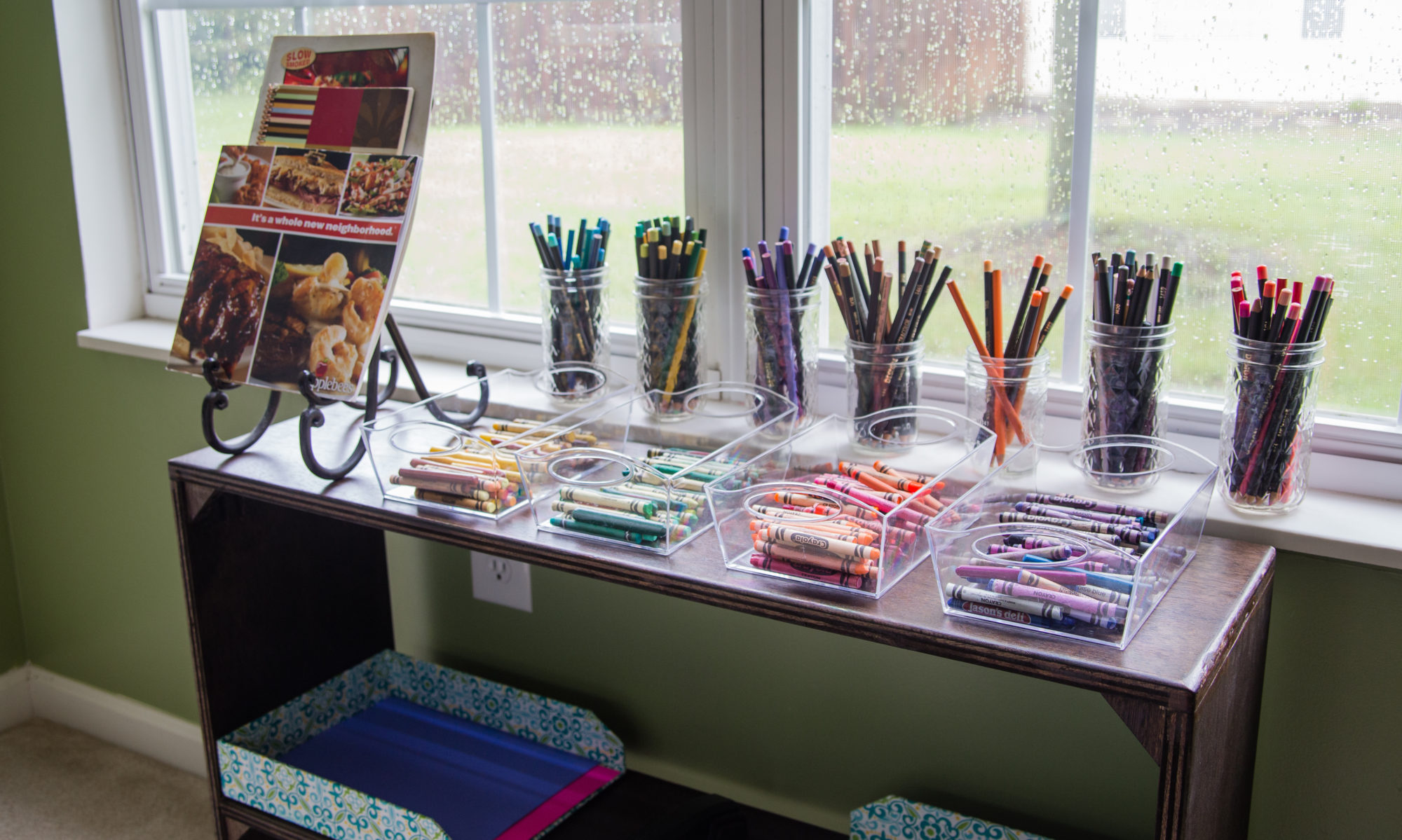
Learning is a social experience, but sometimes we need a little space for ourselves too. My 2yo friends have come to this realization over the last couple of weeks. While I work with them to identify and verbalize their need for personal space, I also adapted one of our invitations to help out. I simply used some closed game boards to create a sense of boundaries with one of our communal spaces.
I did not say anything at all to my friends about the new layout. They could all work together on one board if they wanted. They could freely move around to different boards if they wanted. I simply watched and waited for an opportunity to help my friends with this new social challenge, which didn’t take long at all. It sounded like this:
Regan: *scrunching up her face and shoulders and bearing her teeth*
Me: Regan, your face is telling me that you feel angry or frustrated?
Regan: I don’t want him to be next to me!
Me: Oh! You would like to work by yourself?
Regan: Yes!
Me: I understand! The words you are looking for are, ‘I would like my own space, please!’
Regan to Ben: I would like my own space, please!
Me to Ben: Ben, I heard Regan say that she would like her own space. She would like to work by herself right now. I see that Regan is working on the blue board. Would you like to work on the black board or the orange board while you wait for her?
Ben: Black!
(names have been changed to protect privacy)

Setting Them Up for Success
Intentionally balance authority with freedom.
I had direct control over what the invitation looked like and why it was set up that way. I also provided physical proximity, knowing that I would have the opportunity to help my friends work through this challenge successfully. My friends however, still had the freedom to choose how they interacted with the materials and with each other.
Translate body language into spoken language.
“Your face is telling me that you feel angry or frustrated.” I validated Regan’s feelings, while also giving both of my friends more verbal language to express their big emotions. This also gave Ben more real-world experience in reading other people’s feelings. Ben can begin to connect words like angry and frustrated to Regan’s scrunched up shoulders and bared teeth.
Turn problem statements into need statements.
Regan stated a problem that directly related to Ben’s actions, “I don’t want him to be next to me!” It sounded like a personal attack, but really it was her way of telling me to take care of the problem for her. However, my job is not to take care of problems for my friends, but to help them navigate problems for themselves. So I turned her problem statement into a need statement, “You would like to work by yourself.” Need statements help children express a personal need to someone else — in this case the need to work alone.
Teach and model common social scripts.
“I would like my own space, please,” is a social script that I teach my friends because personal space comes up quite frequently. Positive social scripts are a common language that we all use to communicate our needs and wants to one another. I also use them as a kind of “bat signal.” If I hear an escalated variation of a script — “Find your own space!” — I know exactly what is happening and how I need to intervene immediately; no questions asked!
Assume the best and say it out loud!
Regan, and many adults in this situation, might assume that Ben was there to take something away from Regan. Even if that were the case, it is my job as the adult to assume the best of Ben. It is also my job to communicate that best assumption to both of them, while also respecting Regan’s right to personal space. “Would you like to work…while you wait for her?” The end of this question assumes and communicates to both of them that Ben was there because he wanted to work with Regan. So if Ben had been there to take something away from Regan, he has now heard me say something better about his intentions, which he is more likely to repeat in the future.
Follow up with positive redirection.
“Ben, I heard Regan say that she would like her own space. She would like to work by herself right now. I see that she is working on the blue board. Would you like to work on the black board or the orange board while you wait for her?”
Positive redirections do not feel or sound like a consequence because they are not. There was no reason for Ben to feel ashamed for standing next to Regan because I assumed the best of him. This positive redirection gave Ben a better understanding of what Regan needed: personal space. I also immediately presented him with a very concrete choice: black or orange. This gave Ben a way to be successful and feel empowered, instead of hurt or embarrassed. Because he already felt successful, he was compelled to make a good choice!
This was the very first time I have used this script with this group of friends. I know from experience that I will need to repeat it and model it consistently many, many more times before they can use it successfully on their own. However, I remind myself that my purpose is to teach them skills that they can take with them for the rest of their lives. That takes time. That takes intention. That takes knowing my why.
